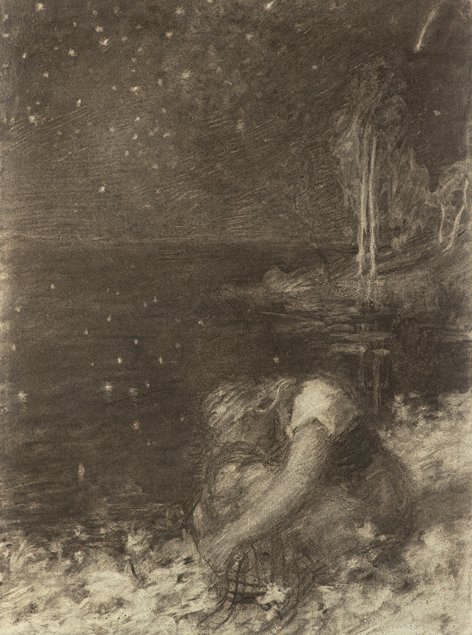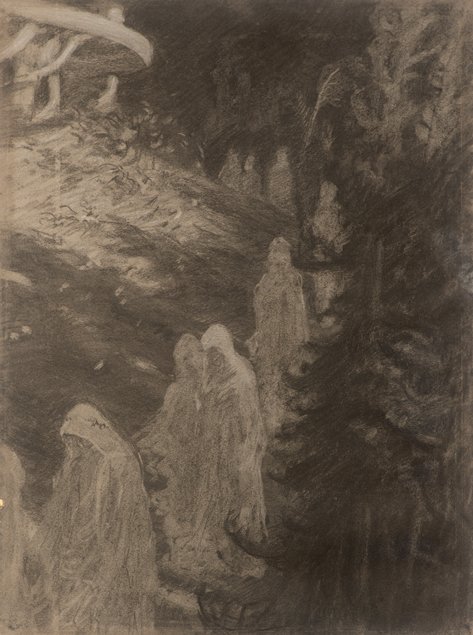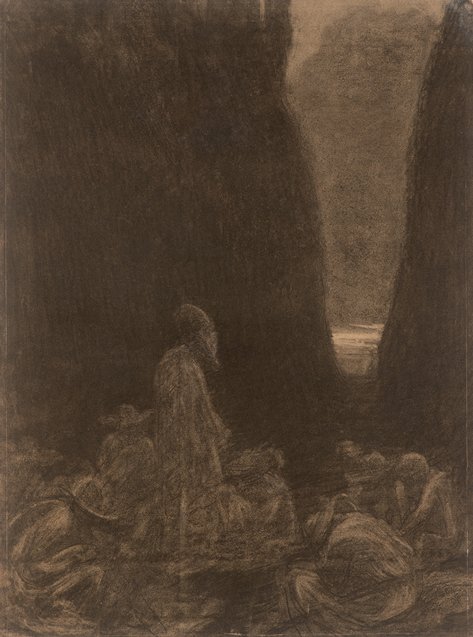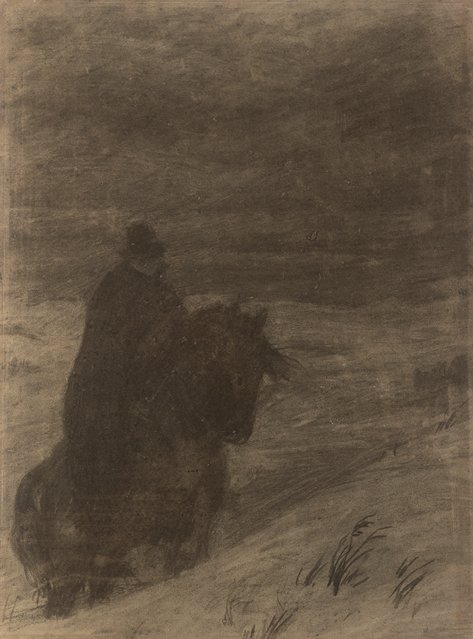100 000 CZK
| 3 922 €
Lot 33
FOUR DRAWINGS FOR KAREL HYNEK MACHA’S MAY
Starting price
Price realized
200 000 CZK
| 7 843 €
| 7 843 €
price without premium
Charcoal on cardboard.
I. Woman; 48 × 35 cm. This young woman curled up on the shore of a lake at night was drawn for the first part of May. The drawing is the sketch for a larger pastel titled May Night (1900, 78.5 × 58 cm, National Gallery in Prague, K 41.584).
II. Gallows Hill – March of phantoms; 49 × 36 cm. Under the executioner’s wheel with the twined body of the felon comes a march of nine figures cloaked in white. This is the illustration for Intermezzo I in May.
III. Gorge; 48 × 36 cm. This is the illustration for Intermezzo II in May: “Darkness within darkness throwing/Hide a company of friends there ... Lost, our leader!—they have slain him!”
IV. Rider; 48.5 × 37 cm. Illustration for the final part of May: “The seventh year’s last day ...
Lone hoof-beats by the lake troubled the silent time. I was that wayfarer, bound for the town by night.”
According to the expert opinion prepared by Prof. PhDr. Petr Wittlich, CSc: “This set of drawings is attributed to Maxmilián Svabinsky based on the reproduction of the drawing “Gallows Hill – March of phantoms” in F. V. Krejci’s monograph Karel Hynek Mácha, a 1907 book about the Czech poet, on p. 144. In Orlikova’s monograph from 2001, the drawing was believed to be missing. The drawings were not created on commission, which explains their fresh and vivid execution. They testify to Svabinsky’s excellent draftsmanship, communicating his deep impression of Mácha’s May while demonstrating his oft overlooked relationship to modern symbolism. For Zákavec the march of phantoms, which he had apparently known only from Krejci’s monograph, was interesting because “the veils of bends and turns are treated in Watts, Pre-Raphaelite style.” Rider demonstrates that Svabinsky also had an affinity for Impressionism, which emphasized sensual immediacy. Gorge hints that Svabinsky likely saw figurative compositions in Mucha’s Le Pater from 1897. Woman is the most authentic as it brings together Svabinsky’s sensory ideas with the subject of the woman, creating a natural cosmology in her relationship with nature. The entire collection is a welcome addition to perspectives on the leading Czech artist’s early work.”
Ref.: Volné smery, 1902; F. V. Krejci: Karel Hynek Mácha, kniha o ceském básniku, 1907.
More works from auction
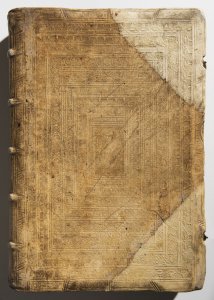
Lot 1 LIBER CHRONICARUM
Starting price650 000 CZK | 25 490 €
Price realized
650 000 CZK | 25 490 €
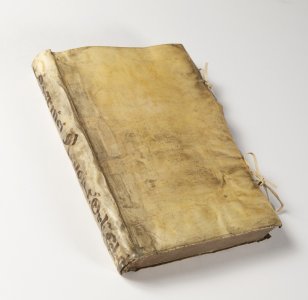
Lot 2 DE REVOLUTIONIBUS ORBIUM COELESTIUM
Starting price1 900 000 CZK | 74 510 €
Price realized
2 000 000 CZK | 78 431 €
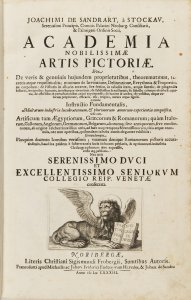
Lot 3 ACADEMIA NOBILISSIMAE ARTIS PICTORIAE
Starting price40 000 CZK | 1 569 €
Price realized
41 000 CZK | 1 608 €
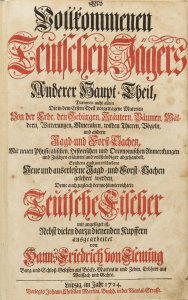
Lot 4 DES VOLLKOMMENEN TEUTSCHEN JÄGERS ANDERER HAUPT-THEIL
Starting price38 000 CZK | 1 490 €
Price realized
10 000 CZK | 392 €
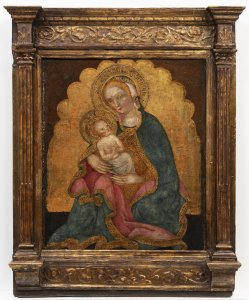
Lot 5 MADONNA WITH THE CHRIST CHILD
Starting price500 000 CZK | 19 608 €
Price realized
500 000 CZK | 19 608 €
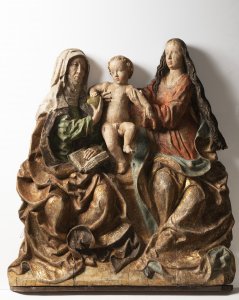
Lot 6 THE VIRGIN AND CHILD WITH ST. ANNE
Starting price350 000 CZK | 13 725 €
Price realized
350 000 CZK | 13 725 €
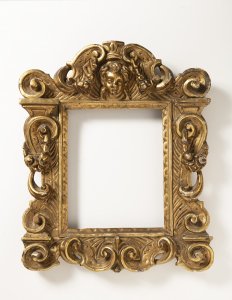
Lot 7 ITALIAN RENAISSANCE FRAME
Starting price55 000 CZK | 2 157 €
Price realized
65 000 CZK | 2 549 €
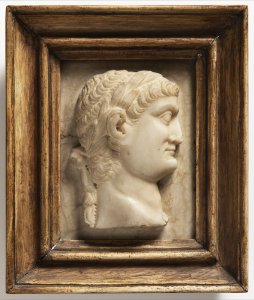
Lot 8 TWO RELIEF PORTRAITS OF ROMAN EMPERORS
Starting price45 000 CZK | 1 765 €
Price realized
45 000 CZK | 1 765 €
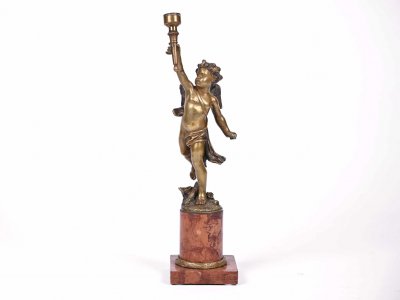
Lot 9 VENUS HONORED BY NYMPHS AND A FAUN
Starting price280 000 CZK | 10 980 €
Price realized
23 225 CZK | 911 €
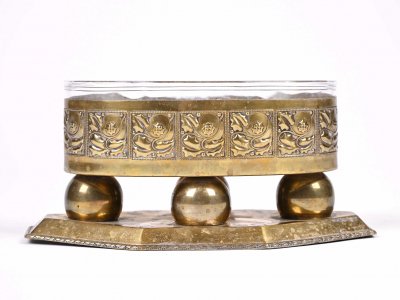
Lot 10 SAINT AGNES OF ROME
Starting price200 000 CZK | 7 843 €
Price realized
3 466 CZK | 136 €
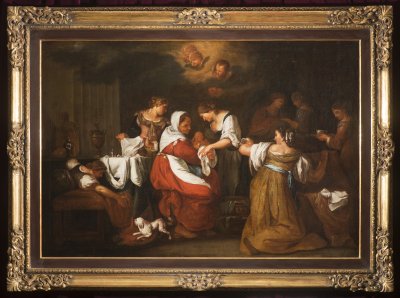
Lot 11 THE BIRTH OF THE VIRGIN
Starting price800 000 CZK | 31 373 €
Price realized
950 000 CZK | 37 255 €
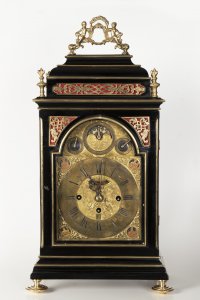
Lot 12 A BAROQUE TABLE CLOCK
Starting price100 000 CZK | 3 922 €
Price realized
100 000 CZK | 3 922 €

